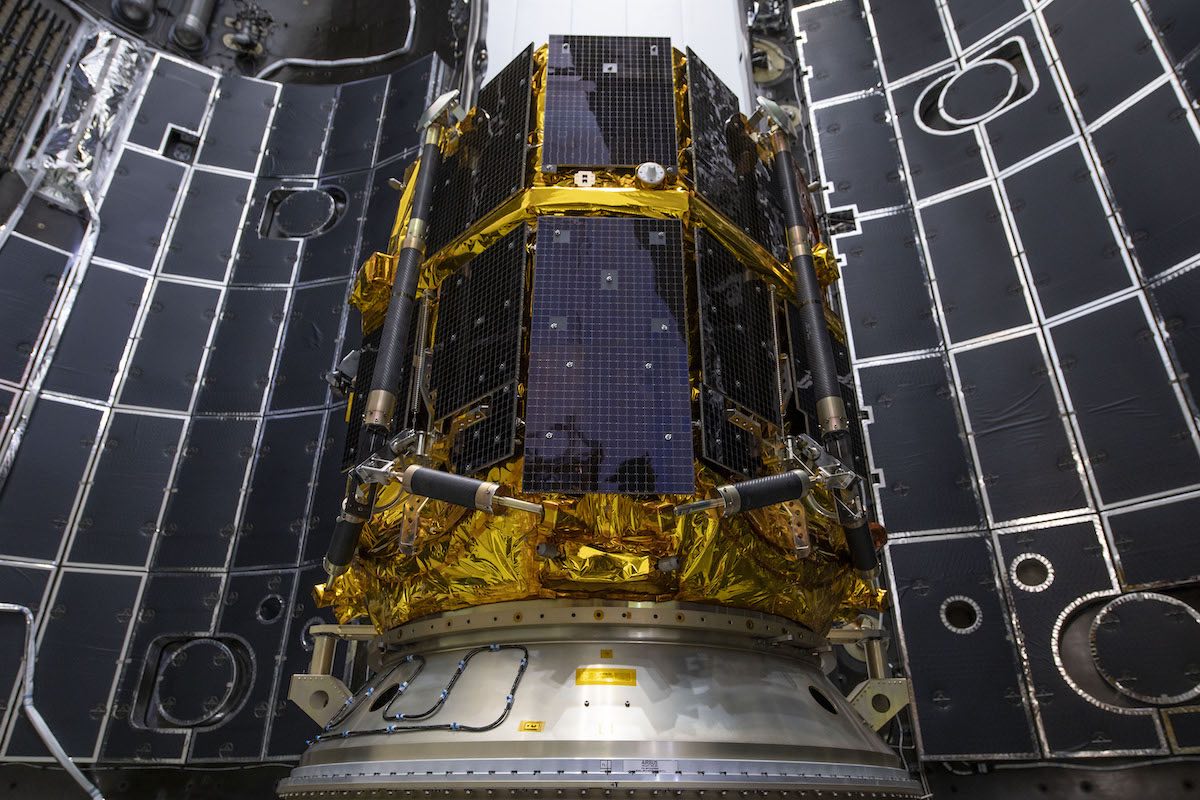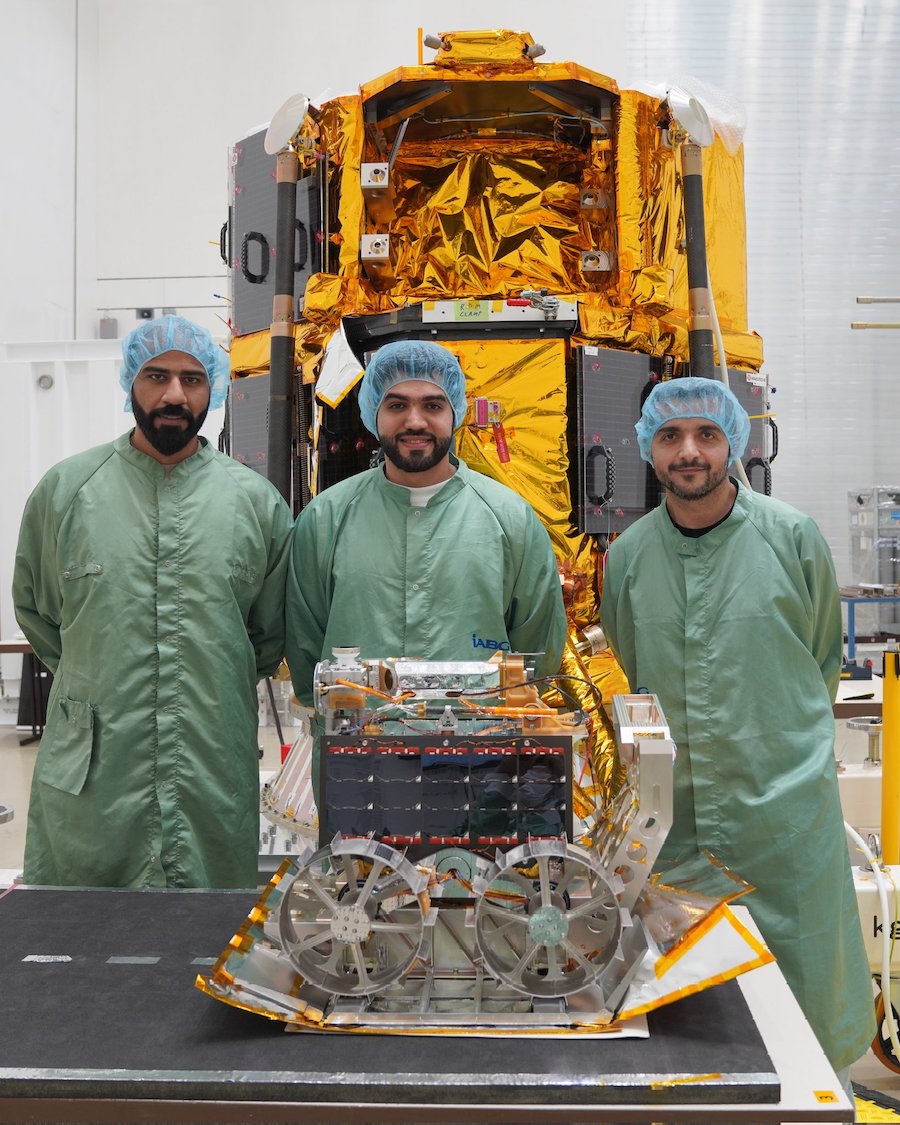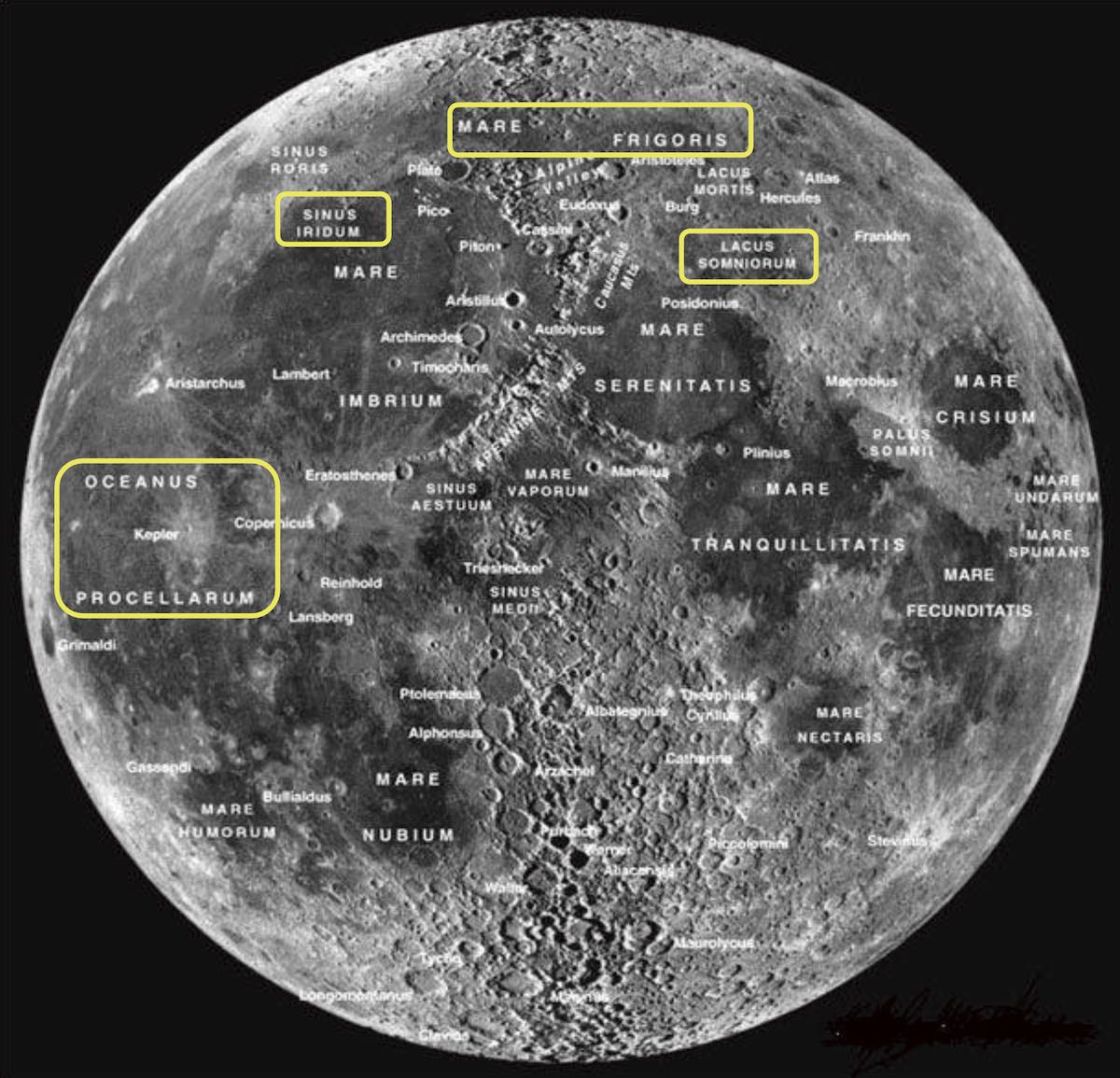EDITOR’S NOTE: Updated at 11:15 p.m. EST on Nov. 29 (0415 GMT on Nov. 30) with SpaceX’s announcement of launch delay.

A commercial moon craft developed by the Japanese company ispace is awaiting launch from Cape Canaveral on a SpaceX Falcon 9 rocket that will send it on a five-month trajectory culminating in a lunar landing attempt next year, an achievement that could make ispace the first private company to accomplish the feat.
The one-ton robotic Hakuto-R lander is set for liftoff from Cape Canaveral Space Force Station. SpaceX called off a launch attempt early Wednesday to allow time for “additional pre-flight checkouts,” then announced a longer delay later Wednesday. A new launch date was not immediately available.
The Falcon 9 rocket will send the spacecraft on a course taking it a million miles from Earth, well beyond the moon, on a long-duration but fuel-efficient voyage before it slips into lunar orbit next April.
Once in orbit around the moon, ispace’s lander will fire its main engine to autonomously descend to the lunar surface, targeting a landing in the northern hemisphere of the moon’s nearside.
The moon lander mission is the culmination of 12 years of engineering development and fundraising, an effort that included starts, stops, and wholesale changes in scope.
The Google Lunar X Prize, the sweepstakes that offered a $20 million grand prize to the first privately-funded team to put a lander on the moon, was the original impetus for Takeshi Hakamada to establish the company that eventually became ispace. Hakamada’s group, called Hakuto, worked on designing a lunar rover to ride to the moon on another lander. But the Google Lunar X Prize shut down in 2018 without a winner, leading some of the teams to dissolve or struggle to find new purpose.
Hakamada redirected ispace’s efforts to design and develop its own moon lander, a reboot the firm calls Hakuto-R. Hakuto means “white rabbit” in Japanese.
“Since then, our mission shifted from only the Lunar X Prize to a broader transportation business,” Hakamada said in an interview with Spaceflight Now. “We are aiming to launch our first mission Nov. 30. This is going to be the first private mission to land on the moon, and we are going to bring payloads from the government side and also the private sector, too. This is going to be opening the door for future commercial cislunar industries.”
As of July, the company had secured $237 million in equity financing and bank loans to pay for the Hakuto-R lunar transportation program, although ispace has not disclosed the standalone cost of the first mission. The company says it “specializes in designing and building lunar landers and rovers.”
The goal of ispace is to “extend the sphere of human life into space and create a sustainable world by providing high-frequency, low-cost transportation services to the moon,” according to the company’s website.

The first Hakuto-R lander, which ispace calls Mission 1, will carry about 24 pounds (11 kilograms) of customer payloads to the moon’s surface, according to Hakamada. By far, the largest of the payloads is a rover from the United Arab Emirates developed by the Mohammed Bin Rashid Space Center. While the rover takes up most of the Hakuto-R lander’s payload capacity, it is still small in stature, measuring just 21 inches by 21 inches (53-by-53 centimeters).
The lander is also hauling an even smaller mobile robot developed by the Japan Aerospace Exploration Agency and the Japanese toy company Tomy. The so-called transformable lunar robot weighs just a half-pound (250 grams) and is some 3 inches (80 millimeters) wide before it deploys tiny wheels to roll across the lunar surface and collect data and imagery to aid in the design of a future pressurized rover to transport astronauts on the moon.
A payload from NGK Spark Plug, another Japanese company, will test the performance of solid-state batteries. The Hakuto-R landing craft also has payloads from three Canadian companies: Wide-angle cameras from Canadensys, an artificial intelligence flight computer from Mission Control Space Services, and a demonstration for NGC Aerospace’s crater-based autonomous navigation system.
First, ispace’s lander has to reach the moon. Government-led missions from the United States, the Soviet Union, and China have landed on the moon, but ispace is using a commercial business model.
“Our mission is privately funded,” Hakamada said. “However, we have some relationships with governments, like our payload from the UAE Space Agency and MBRSC, and we also have a JAXA payload as well. But even these payloads are commercial contracts, with no R&D funding from the government, so totally different than the past engagement with the government.”
Hakamada’s investors include Suzuki, Japan Airlines, the Development Bank of Japan, Konica Minolta, Dentsu, and numerous venture capital and equity funds.

The fundraising allowed ispace to purchase parts for its Hakuto-R lander from suppliers around the world. The hydrazine-fueled propulsion system comes from ArianeGroup, which also helped ispace perform final assembly of the lander in Germany. Draper, a Massachusetts-based company, is providing guidance, navigation, and control software for the landing, a similar role Draper filled on NASA’s Apollo missions. The solar panels were supplied by Sierra Space.
“As our first mission, my strategy was to accelerate the speed to go to the market,” Hakamada said. “In order to do that, we recognized that becoming the systems integrator is key to accelerate the speed of development. If we develop each of the components, it takes time. There is technology for this, and the important point is how do you integrate the technology into one system with enough funding.”
The first Hakuto-R lander, which ispace calls its Series 1 design, weighs about 2,200 pounds (1 metric ton) fully fueled for launch. About two-thirds of its launch mass is hydrazine and nitrogen tetroxide propellants to feed the lander’s engines. With its legs extended, the lander stands 7.5 feet (2.3 meters) tall and 8.5 feet (2.6 meters) wide.
After departure from Cape Canaveral, SpaceX’s Falcon 9 rocket will head east over the Atlantic Ocean and shut down its first stage booster less than two-and-a-half minutes into the flight. The reusable first stage, flying for the fourth time, will return to Cape Canaveral for a propulsive landing.
The Falcon 9’s second stage will fire two times to send the Hakuto-R lander on a speedy trajectory to carry it far away from Earth. Separation of the lander from the Falcon 9 upper stage is scheduled 46 minutes into the mission. That will be followed by activation of the spacecraft’s systems and extension of its four landing legs.
A 31-pound (14-kilogram) hitchhiker payload for NASA, called Lunar Flashlight, will deploy from the Falcon 9 nearly 53 minutes after launch. The Lunar Flashlight is led by NASA’s Jet Propulsion Laboratory, and will fly itself to a looping halo orbit around the moon. Its mission will test a laser system to shine into eternally dark craters near the lunar poles. The spacecraft will measure the light reflected off the lunar surface, revealing the composition and quantity of water ice and other molecules hidden on dark crater floors.

With a series of course correction maneuvers, the ispace lander will take a similar but independent track toward its destination. It will reach a maximum distance a million miles, or 1.5 million kilometers, away from Earth before gravity pulls it back toward the moon. The Hakuto-R lander will fire thrusters to be captured into lunar orbit, then set up for the final descent to the surface around the end of April.
“We call it a low-energy orbit because we can reduce propellant consumption using this orbit, having an assist from the gravity of the sun,” Hakamada said. “In order to reduce the launch mass and reduce launch cost, we selected this orbit. But this orbit is similar to several recent mission to use similar trajectory, like the CAPSTONE mission by NASA or the Korean lunar orbiter as well. So we don’t think there is a lot of risk on this orbit.”
The target landing site is Atlas crater, located in a region on the nearside of the moon called Mare Frigoris, or the Sea of Cold. Engineers at a mission operations center in Tokyo will oversee Hakuto-R’s flight to the moon.
Ryo Ujiie, ispace’s chief technology officer, said the company has identified 10 major milestones for its first lunar landing mission. The first milestone has already been achieved with the completion of launch preparations. That will be followed by the launch and deployment of the Hakuto-R spacecraft, establishment of steady-state operations, and the first orbit control maneuver within one or two days of liftoff.
Other milestones included the completion of one month of operations in deep space, the execution of additional course correction burns, entry into lunar orbit, adjustments to line up with the landing site, and the landing itself. A final objective will be the completion of payload operations on the lunar surface.
Assuming the landing is successful, the spacecraft is designed to operate for about 10 days after touchdown. long enough to deploy the UAE’s moon rover and JAXA’s mobile robot. The stationary landing craft will relay communications signals from the deployable payloads back to Earth. The mission will end when sun sets on the landing site to begin the two-week-long lunar night.
Aside from the payloads mounted on lander, ispace aims to fulfill a contract with NASA with the first Hakuto-R mission. NASA awarded contracts in 2020 to purchase lunar regolith from commercial companies, including a $5,000 deal to ispace. All of the agreements were relatively low in monetary value.
The initiative is part of NASA’s Artemis moon program. NASA wants to eventually contract with commercial companies to acquire resources, such as minerals and water, that could sustain a future moon base. The transfer of ownership of lunar soil from a private company to NASA will help officials on both sides of the transaction sort through legal and regulatory issues.
“It’s only the conceptual transfer of ownership,” Hakamada said. Bits of dust kicked up by the landing engine are expected to settle on the footpads of the lander’s legs.
“The regolith will come in and cover the pad, and we declare the capture of the lunar regolith, and then transfer the ownership of the regolith on this pad. We don’t move this regolith somewhere else, we don’t expect that for this first mission.”
Hakamada said ispace has a second contract to sell lunar regolith to NASA on the company’s next lunar landing mission, scheduled for 2024. On that mission, ispace may attempt to scoop up some soil from the lunar surface.
While the first Hakuto-R Series 1 lander is a purely commercial mission, ispace is working with Draper and other space companies to develop a larger robotic moon lander to transport up to a half-ton of cargo to the moon for NASA. Draper and ispace won a NASA Commercial Lunar Payload Services, or CLPS, contract earlier this year to deliver multiple NASA science instruments to the moon’s surface in 2025.
NASA’s first two CLPS missions will be flown by Astrobotic and Intuitive Machines. Both of those companies plan to launch their first privately-developed moon landers next year.
Email the author.
Follow Stephen Clark on Twitter: @StephenClark1.
